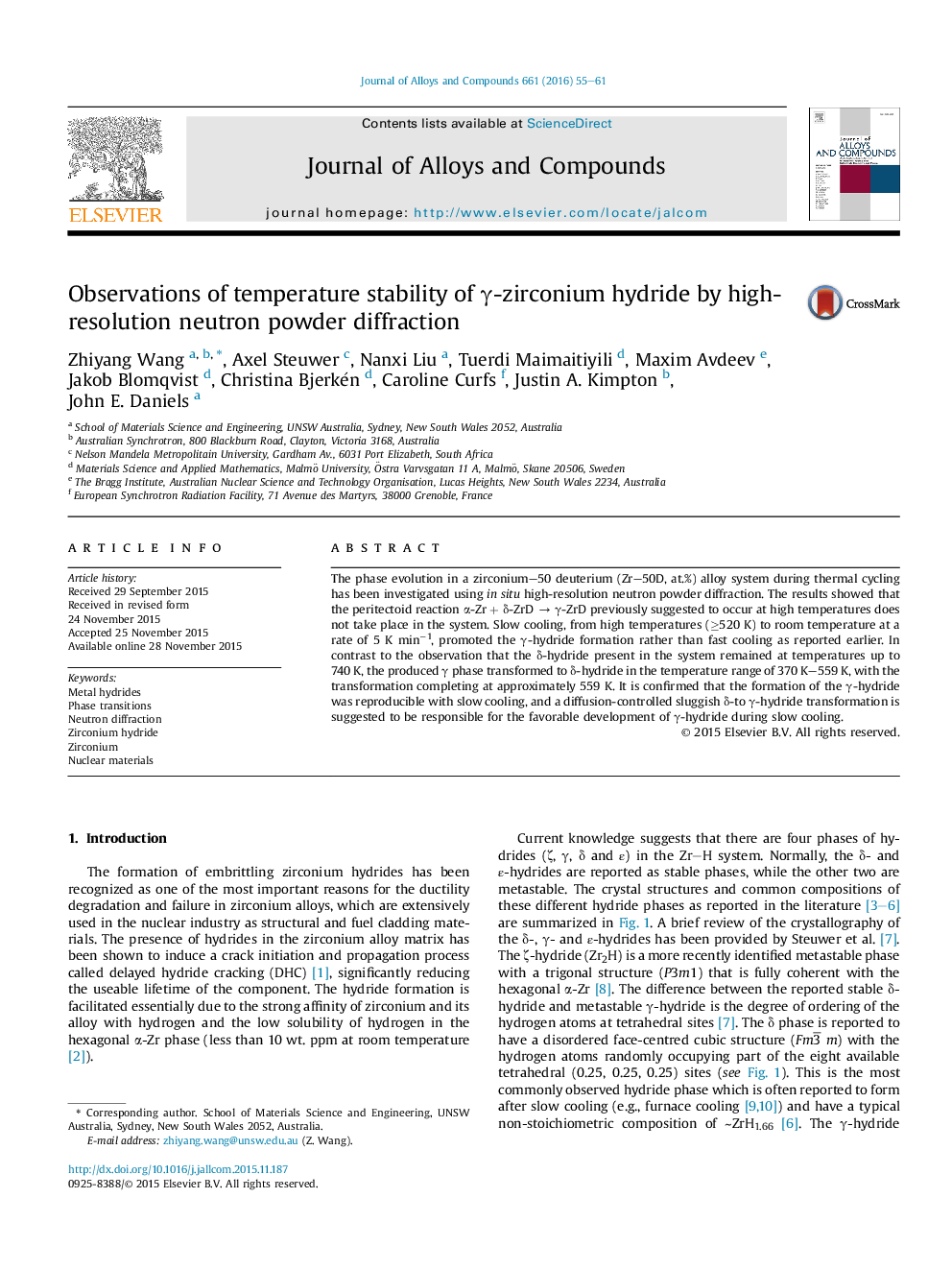| کد مقاله | کد نشریه | سال انتشار | مقاله انگلیسی | نسخه تمام متن |
|---|---|---|---|---|
| 1607017 | 1516232 | 2016 | 7 صفحه PDF | دانلود رایگان |

• The zirconium hydride phase evolution during thermal cycling was studied.
• Slow cooling was found to promote the γ-hydride formation, not fast quenching.
• We suggest a possible explanation for the observed γ-hydride formation.
• The produced γ-hydride was unstable and transformed to δ-hydride during heating.
• The δ-hydride was stable at high temperatures up to 740 K.
The phase evolution in a zirconium–50 deuterium (Zr–50D, at.%) alloy system during thermal cycling has been investigated using in situ high-resolution neutron powder diffraction. The results showed that the peritectoid reaction α-Zr + δ-ZrD → γ-ZrD previously suggested to occur at high temperatures does not take place in the system. Slow cooling, from high temperatures (≥520 K) to room temperature at a rate of 5 K min−1, promoted the γ-hydride formation rather than fast cooling as reported earlier. In contrast to the observation that the δ-hydride present in the system remained at temperatures up to 740 K, the produced γ phase transformed to δ-hydride in the temperature range of 370 K–559 K, with the transformation completing at approximately 559 K. It is confirmed that the formation of the γ-hydride was reproducible with slow cooling, and a diffusion-controlled sluggish δ-to γ-hydride transformation is suggested to be responsible for the favorable development of γ-hydride during slow cooling.
Figure optionsDownload as PowerPoint slide
Journal: Journal of Alloys and Compounds - Volume 661, 15 March 2016, Pages 55–61